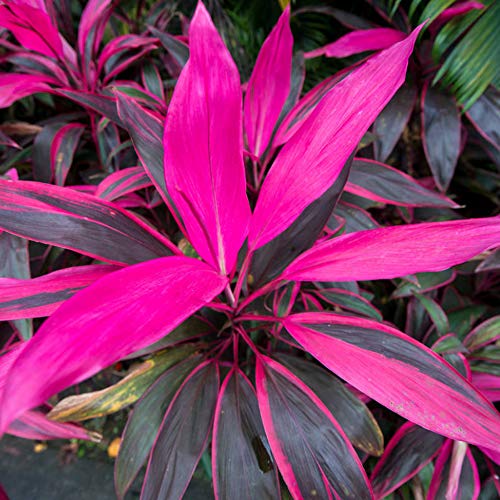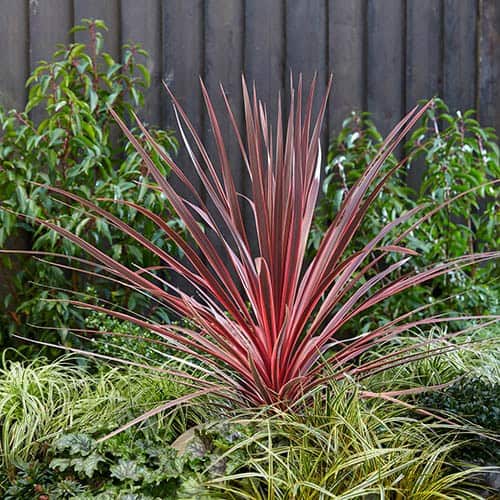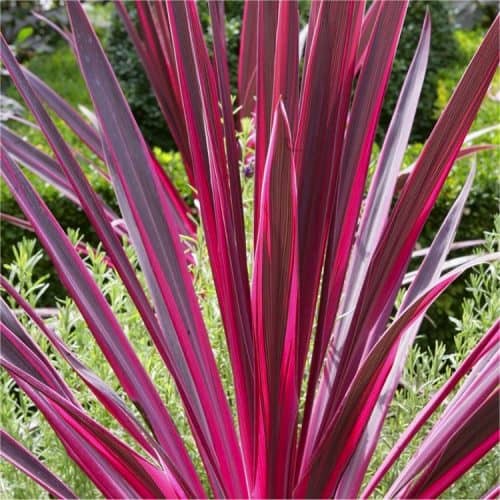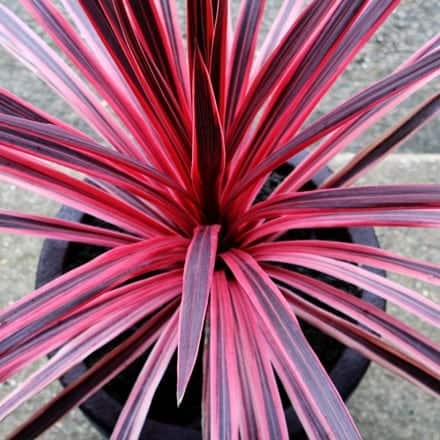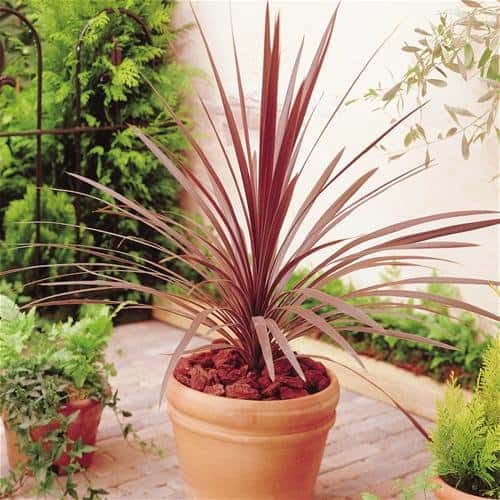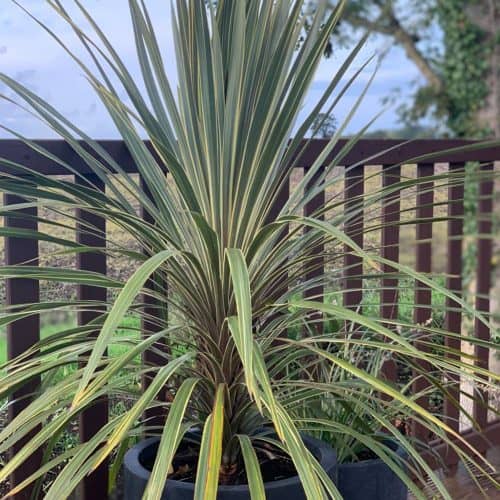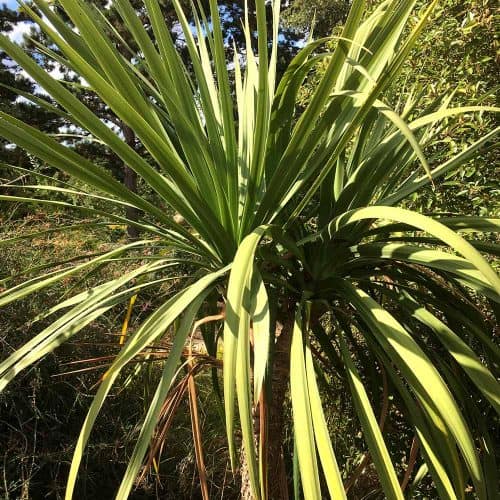
Example of a frost damaged cordyline
Cordyline or commonly called cabbage palm, is a beautiful ornamental shrub, though it is sometimes categorised as a small tree. It is commonly cultivated for its evergreen beautiful foliage that can often last through mild winters without getting damaged. It can be common to get Cordyline problems, but most are easily fixed.
IN THIS ARTICLE
Cordyline looking sad after the recent cold spell in early 2023 and now looking dead?
(Updated Feb 2023)
What should I do with my frost damaged cordyline?
What to do if the leaves are brown but crown still solid: Just leave it, give it a good feed after the frosts have cleared in May and leave it alone to do it’s own thing. It may grow back from the crown, or worst case it’ll grow from the base again
What should I do with a problem cordyline with a dead crown from ice and frost damage?
If the crown has died, or turned to mush with all the top leaves dead, the very best thing you can do right now is just leave it. (Writing this in Feb) Wait until end of March, and then inspect the crown and trunk to see what’s going on. If the crown is mush, remove the dead and dying leaves which will allow you to see what is dead and what isn’t.
Give the trunk a squeeze until you find it firm and solid, IE where the rot hasn’t made it to yet. Then just cut it off cleanly, cover with something like Arbrex and leave it.
You’ll find that come the spring / summer it will reshoot, or even become multi stem
What should I do with a cordyline that has collapsed at the top?
Same as above, wait until late march, cut off the dead leaves and cut back trunk down to a firm woody section below the rot. Treat, and then leave. Hopefully by the summer it’ll be back to growth again. Fear not!
My cordyline is old and established, can it get damaged by cold weather?
Yes! It can, they are fundamentally tropical plants! However, it’s more than likely you’ll just lose the growing crown, and once you’ve sorted that (see above) it’ll reshoot in the warm weather, don’t worry!
Tips: Don’t cut them down to soil level, as they will become diseased and rot further, make sure you leave it above the ground by a good few inches. Ideally, you only remove the damaged parts to keep as much height as possible.
How to revive a dying cordyline in the UK?
If you have any frost damage, see above for the best ways to bring it back to good health. If it’s dying in the summer it could be a number of things, keep reading to see common pests and diseases. Once the frosts have passed in May, top dress the soil with a good compost, and give a regular feed throughout the growing season into June and July.
Cordylines are a garden backbone plant for every garden!
BUY: Click here if you’re looking for cordylines to buy, or want to read more about the different types

Winter frost damaged Cordyline Crown
Cordyline species and cultivars are considered low maintenance plants that are easy to plant, grow, and maintain. Unfortunately, even when growing this simple plant, you don’t have control over everything and you might see your plant suffering from discoloured leaves, spotty leaves, and so on.
Often, these problems are caused by pests or diseases that attack the plants. Most of these problems can be managed without too much fuss and you can restore your plant to its original healthy and vibrant state.
We are going to tell you the most common pests and diseases that attack a cordyline plant and how to control and maintain them.
Common Cordyline Problems – Pests
Scales – Cordyline Problems
Scales are pests that commonly affect a wide variety of plants and can permanently damage your plants if left unchecked. They are tiny insects that consume the plant’s sap and all the nutrients in it and thus limit the nutrients that get circulated in the plants.
The damage does not stop at consuming the plant’s sap, these insects excrete honeydew which is a sweet, sticky residue that attracts other harmful pests like aphids and causes further infections.
Scales should be identified and controlled before they cause defoliation, and consequently, the death of your plant. Though chemicals and insecticides are effective against scales, it is only in the short run so a more efficient option is to introduce their natural predators such as parasitic wasps, ladybirds, or vedalia beetles.
Thrips – Cordyline Problems
Thrips are tiny winged insects that consume the cellular matter found in plants. While the presence of thrips may not be fatal to your cordyline plants, they cause some serious damage to the foliage. They consume the cellular matter in the leaves and stems causing a deficiency of several nutrients and leaving your plants with damaged, discoloured leaves and a generally weak plant.
Insecticides are not considered to be effective against thrips so the most effective way to manage thrips is to introduce predatory insects to your plants. Thrips are prey to insects such as ladybugs, mites, green lacewings, and parasitic wasps so this might help to control the population of thrips on your plants.

Winter frost damaged Cordyline browned Leaves
Other common pests are spider mites and mealybugs.
Common Cordyline Problems – Diseases
Root rot – Cordyline Problems
Root rot is caused by a fungal pathogen called Fusarium. It is introduced to the plant when the plant roots are kept consistently moist either because of overwatering or poor soil drainage. The infection is identified by wilting of the leaves, discolouration of the lower leaves, or brown leaves.
To prevent root rot, make sure the topsoil of your cordyline dries out between watering periods. To control it, a fungicide can be introduced but if the infection is severe you may have to cut down the plant completely.
Cordyline slime flux – Cordyline Problems
Frost damage is not the only thing that you should be worried about with your cordyline plants in winter, unfortunately, the chances of slime flux infection are higher during these colder months too.
Slime flux is a bacterial disease that damages a plant’s tissue. It is easy to spot because it produces a foul-smelling fluid around the stem. These thick, smelly fluids create black stains on your plants and the infected parts should be quickly removed if the plant must survive.
Apart from the removal of the infected regions, there is no cure for cordyline slime flux but you can prevent it through winter protection. You can either move your cordyline plants indoors or wrap them with a warm fleece during winter.
Other common infections are leaf spots, dull colours, etc.
FAQ
Do cordylines produce flowers?
They’re often cultivated for their foliage but they flower in late spring to early summer. They produce a spray of tiny white flowers that are sometimes followed by round, red or purple berries.
Do cordylines spread?
Some varieties of the cordyline spread while others don’t. If you want a cordyline cultivar that spreads opt for the ones that don’t form a trunk so they can form a neat clump and spread slowly over time.
Why are my cordyline leaves going brown?
Your Cordyline leaves may be turning brown because of overwatering, underwatering, tap water, or low humidity. When underwatering is the cause, the leaves turn crispy and brown, if overwatering is the problem, the leaves are mushy and brown. To prevent either, water your plant regularly but make sure the topsoil is 25 to 50% dry between watering periods.
Can you grow cordyline in pots?
Cordyline plants can be grown in pots and large containers to be moved indoors during winter.
How can I revive a dying cordyline?
You can feel along the trunk till you find a hardy and woody spot then deadhead the plant from that spot the plant will begin to grow again during the summer months.
Further Reading:
- What should I plant with Cordylines for companion planting?
- Common Cordyline Issues, Pests & Diseases – Tips to fix
- Grow Guide: How to grow, care for and buy Cordylines in the UK
Other varieties of Cordyline covered here are: Cordyline Australis Charlie Boy, Cordyline Australis Pink Passion, Cordyline Australis Pink Star, Cordyline Australis Red Star, Cordyline Australis Torbay Dazzler, Cordyline Australis Verde.
Other Cordyline Varieties
Last Modified: April 21, 2023




